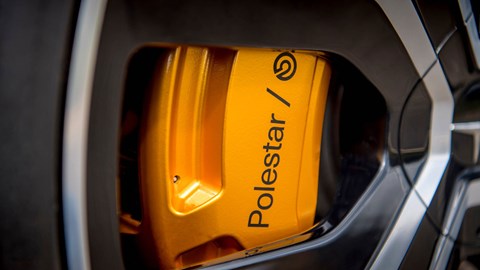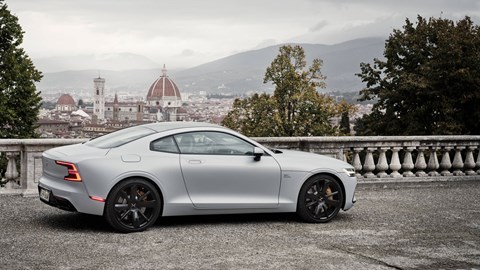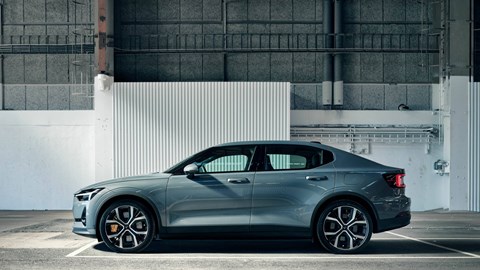► Volvo's electrified offshoot
► Two models already on sale...
► And many more to come
Polestar has revealed a new plan to create a climate neutral car by 2030. Called Polestar 0, the goal was announced at the company’s very first annual review, and aims to put some world-saving figures behind the brand’s already green marketing and production practices.
No offsetting
Interestingly, Polestar won’t be pursuing a policy of offsetting (planting trees to replace CO2 produced during manufacturing cars) due to the practice’s long-term viability. A statement released by Polestar suggests ‘a forest might be logged, devastated by fire or altered by climate change,’ therefore ending any benefits.

‘Offsetting is a cop-out,’ says Thomas Ingenlath, Polestar CEO. ‘By pushing ourselves to create a completely climate-neutral car, we are forced to reach beyond what is possible today.’
\We’re electric, so we don’t have to worry about combustion engines producing toxic emissions – but that doesn’t mean our job is done. We will now work to eradicate all emissions stemming from production,’ added Polestar’s head of sustainability, Fredrika Klarén.
What’s the plan?
Polestar already integrates climate targets into its employee bonus scheme, but now it’ll be taking a more visible approach: Carbon footprint credentials will be published in Polestar Spaces and online for all future models – starting with the 2 – in the same way you can find out how much calories contained in a Big Mac.
Whether people will take a similar approach to Polestar’s transparency as they do to McDonalds’ remains to be seen. And to save you a Google search, it’s 508 calories, consisting of 25g of fat, 43g of carbohydrates and 26g of protein.
Keep reading for more on Polestar

Polestar range
Polestars will not simply be ‘electrified Volvos,’ Ingenlath told CAR. ‘Volvo is clearly defined by its comfort, safety and practicality’.
‘Polestar is not bound by [this]. Polestars will be designed more around the individual, and be more progressive and performance-oriented.

Ingenlath wants to offer more ‘complete performance electric cars’ than any current offering. ‘Electric cars now are defined by their acceleration. That’s useless in day-to-day driving, and sometimes they’re so fast they can be frightening. We will make cars that are really enjoyable to drive in handling, steering and in overall everyday performance.'
Polestar 1

The Polestar 1 was the very first car launched by Polestar, and a state of intent for Geely’s premium electrified brand. A hybrid two-door coupe, the Polestar 1 bares the most resemblance to a Volvo of the models released so far; aside from the grille, the 1 looks a lot like a slightly shortened S90 saloon. That’s because it’s based on the Volvo Concept Coupe of 2013.
It uses a version of the SPA platform and a modified 592bhp, Volvo T8 plug-in hybrid powertrain to boost performance and electric-only range. 62mph arrives from a standstill in just 4.2 seconds, and there’s an all-electric range of 93 miles. In addition, features such as adjustable Öhlins shocks hint at Polestar’s tuning-firm beginnings.
Inside, the Polestar borrows heavily from the Volvo, range too – so it uses a variant of the brand’s Sensus touchscreen software.
While it is available to buy in the UK for £139,000, the Polestar 1 is also available via a monthly subscription model, though currently only available in LHD form.
Read our review of the Polestar 1 here
Polestar 2

The Polestar 2 is the first bespoke EV from the brand, and therefore the most true to the brand’s mission for electrification. The Tesla Model 3 wears a tweaked version of Volvo’s Concept 40.2 design, but stuffs a four-wheel-drive, 402bhp EV powertrain capable of 0-62mph in 2.7 and a range of 311 miles. It’s priced at £49,900.
Inside, the Polestar 2 surrenders its infotainment system to Google; the 2 uses the search giant’s new HMI software, essentially a more powerful, baked-in version of Android Auto.
Like all Polestars, it’s Swedish engineered and Chinese manufactured, on a dedicated site next to Volvo’s existing factory in Chengdu.
Read our review of the Polestar 2 here
Polestar 3

An all-electric ‘aerodynamic’ SUV is the next car on the Polestar roadmap, though there’s very little we actually know about it. CAR understands it’ll be revealed in 2022 and should be more in keeping with the first EV efforts from Audi and Jaguar; making it an e-Tron and I-Pace rival.
It’s unclear what shape the 3 will take; there aren’t any existing concepts from Volvo or Polestar that point to an aerodynamic SUV as Ingenlath describes. We do know the styling will riff on the themes shown in the Polestar Precept concept below, though.
The 3 is likely to be the most popular EV out of the lot, with increased practicality over the 2 and especially 1. So why wait? Judging by the brand’s strong sense of identity and considered marketing approach, it’s possible Ingenlath and Co wanted to first present Polestar DNA on the more engaging canvases of a performance hybrid and squat crossover EV.
With Polestar’s now award-winning design language in place, the Polestar 3 is ready for deployment.
Polestar CEO Ingenlath has indicated the Polestar 3 will be priced somewhere between the 1 and the 2.
Polestar 4: Precept

The Polestar 4 hasn’t been officially announced yet, but sources suggest the recent Precept concept is our first look at the Polestar 4. The largest departure from Volvo’s styling yet, the Precept builds on the themes of the first cars but goes bigger and bolder; Gothenberg’s Thor’s hammer headlights have been split, while new features such as the sensor-filled SmartZone and roof-mounded Lidar get their debut.
The Polestar 4 takes the shape of a four-door GT, which places the Porsche Taycan and forthcoming e-Tron GT firmly in its crosshairs.
‘Precept is a declaration, a vision of what Polestar stands for and what makes the brand relevant,’ said Ingenlath. ‘The car is a response to the clear challenges our society and industry face.’
Read more on the Polestar Precept